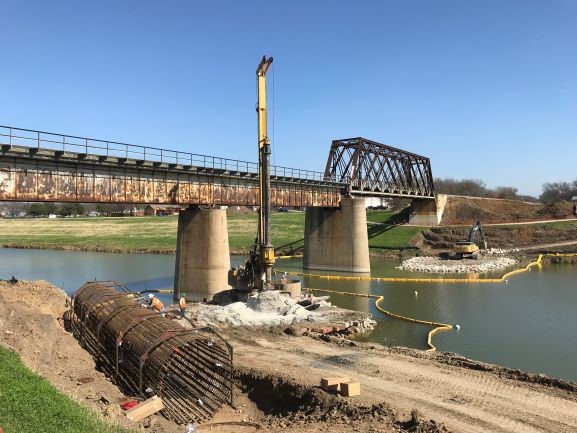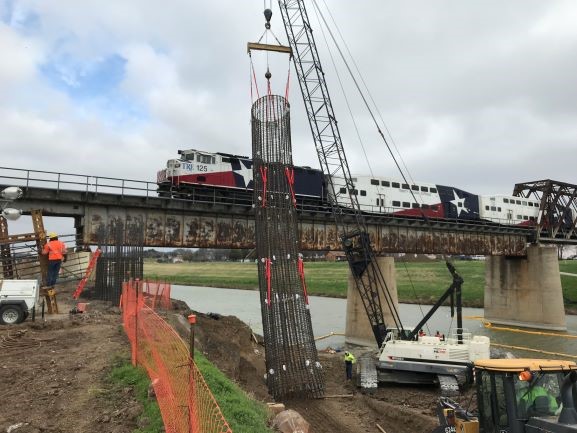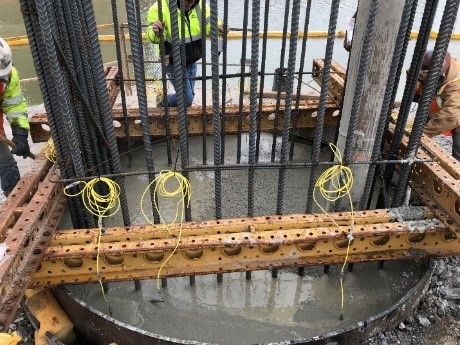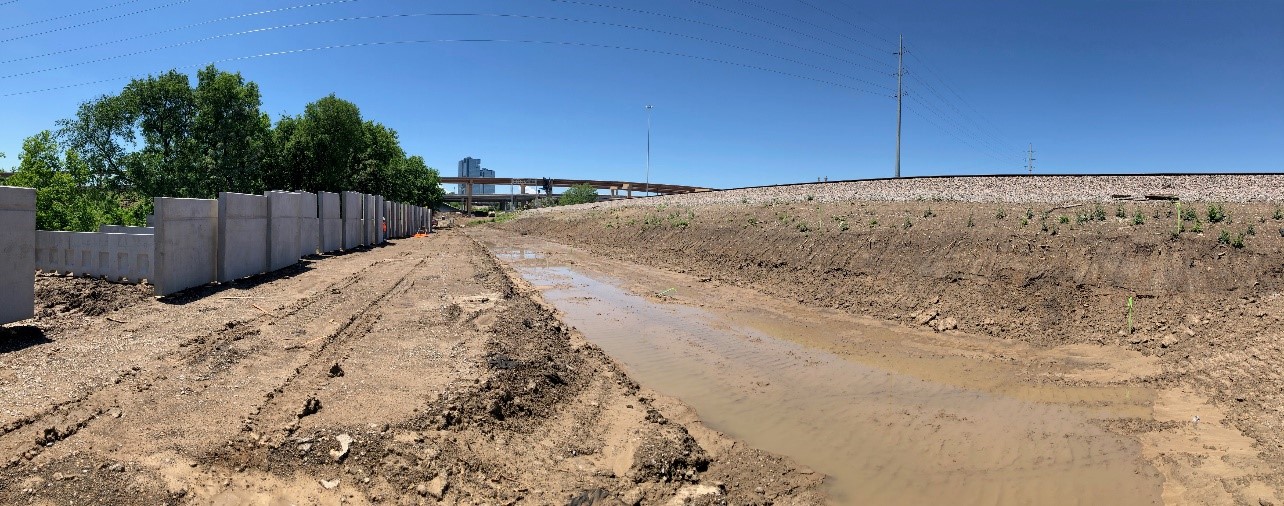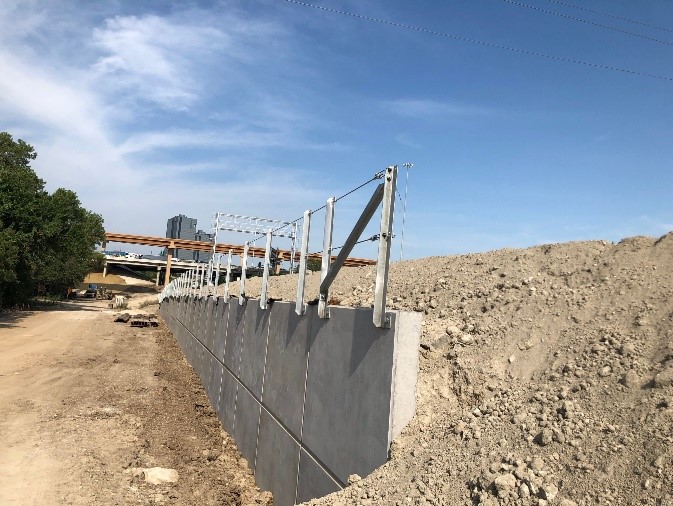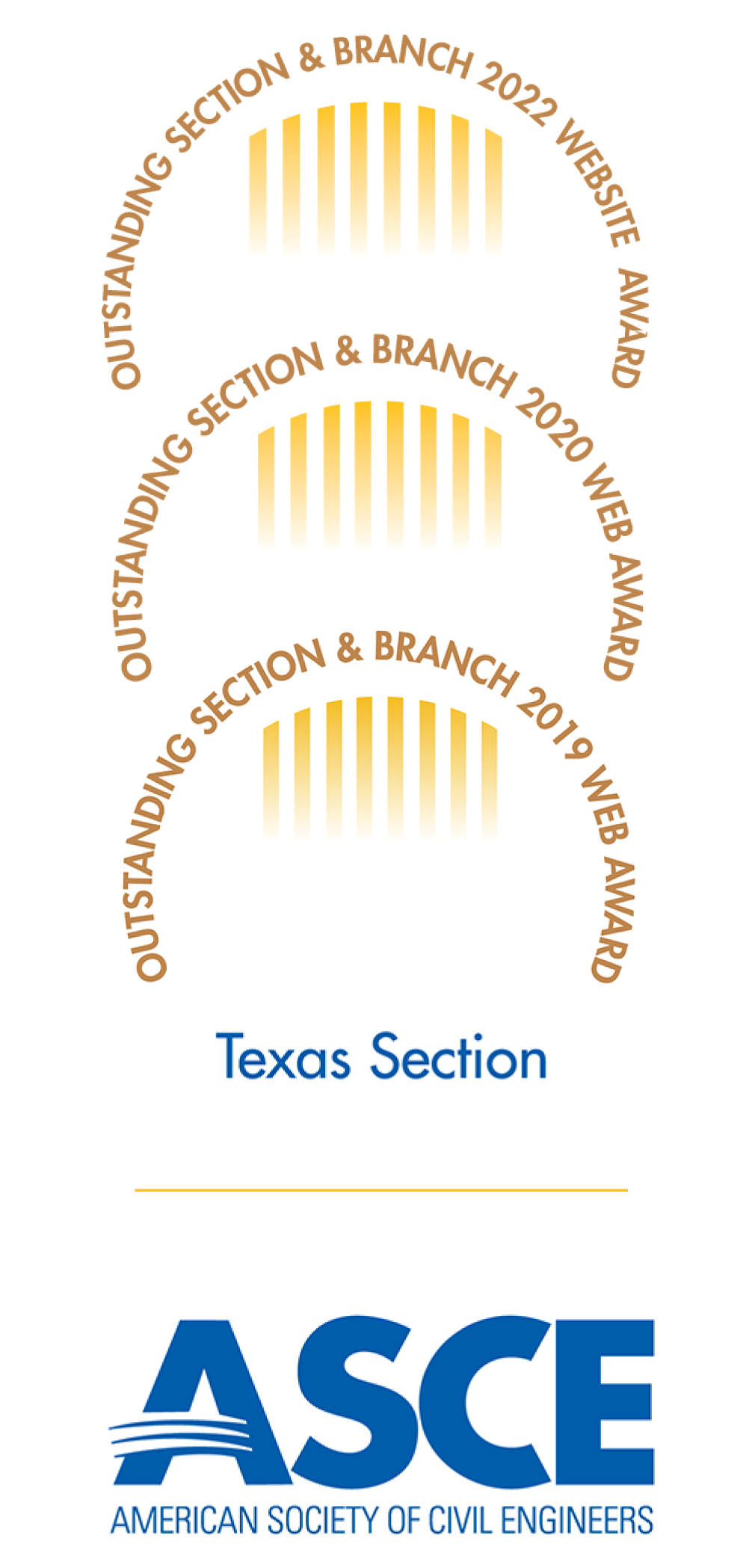Project Background
Trinity Railway Express (TRE) is a commuter rail between Fort Worth and Dallas, with a single track section between I-35W and Sylvania Avenue in Fort Worth crossing the Trinity River on a narrow 764-foot-long historic bridge constructed in 1903. This section is also used by Amtrak, Union Pacific, and BNSF freight trains. The existing bridge does not meet current standards and requires frequent inspection, monitoring, and maintenance to keep trains on schedule. Loaded freight trains are required to reduce their speed to 10 MPH when crossing the bridge. Also freight trains sometimes have to wait for the green signals to proceed to their junction off of the shared line causing delays to commuter trains within this section. This project involved the rehabilitation of the historic Trinity River Bridge and addition of a second track to reduce train travel times.

Time was of the essence on this rail project, and HVJ’s responsiveness to the design team helped resolve issues during critical times in design and construction to avoid project delays.
Design Challenge
The structural engineers identified during the design phase that the construction of 10-foot diameter mono-shafts adjacent to existing footings would be a unique challenge on this project. HVJ’s team conducted a geophysical study to identify the limits of the existing foundation and map it in a 3-D model. HVJ engineers worked closely with the structural engineer to determine the clearance distance and the penetration depth of the new mono-shafts to not impact the existing foundation during construction.
Also since the mono-shafts are in the river, the design team required the use of casing and thermal integrity testing to insure the integrity of the drilled shafts.
[Pictured above from left to right: Fig 2 – 10-foot Diameter Mono Shaft Construction; Fig 3 – 10-foot Diameter Mono Shaft Construction; and Fig 4 – 10-foot Diameter Mono Shaft Construction]

Another unique challenge was the design and construction of retaining walls. T-Walls were identified by the team as an appropriate retaining structures for this project. Since the project involves double tracks, HVJ performed global stability and external stability analyses on the T-Wall sections. Shifting of the track live loads relative to the face of the wall had significant consequences in the stability; therefore, loading scenarios with and without train loads on single and double tracks were considered in the analysis. HVJ conducted multiple iterations to determine the required wall stem length to meet stability requirements and optimize the T-wall stem lengths along the wall.
Construction Challenge
During construction, continuous heavy rain events impacted the wall subgrade soils. Due to the active tracks, this phase of construction was limited to 20 non-consecutive days during the construction schedule with windows of only 12 hours on a Sunday. HVJ provided a solution within these limits that involved removing and replacing subgrade soils with flexible base reinforced with geogrids, and using staged construction to finish building the wall to its full height.
[Pictured above from left to right: Fig 6 – Before Construction of T-Wall; and Fig 7 – After Construction of T-Wall]
Acknowledgement
We would like to express our appreciation to the following project key staff among several others who made this a successful project: Bo Cung, Project Manager for Trinity Metro; Colin Blankenship, Branch Operations Manager with Hayden Consultants; Diane Gollhofer, President with DGR Consultants; Cassandra Wallof, Structural Engineer with HDR; Rusty Branch, Vice President with Gehrig; Michael Cooper, Resident Construction Manager with Urban Engineers; and Chinh Phan, Project Engineer with White Hawk Engineering and Design.
https://www.hvj.com/trinity-railway-express-crossing-trinity-river
Share this story:




